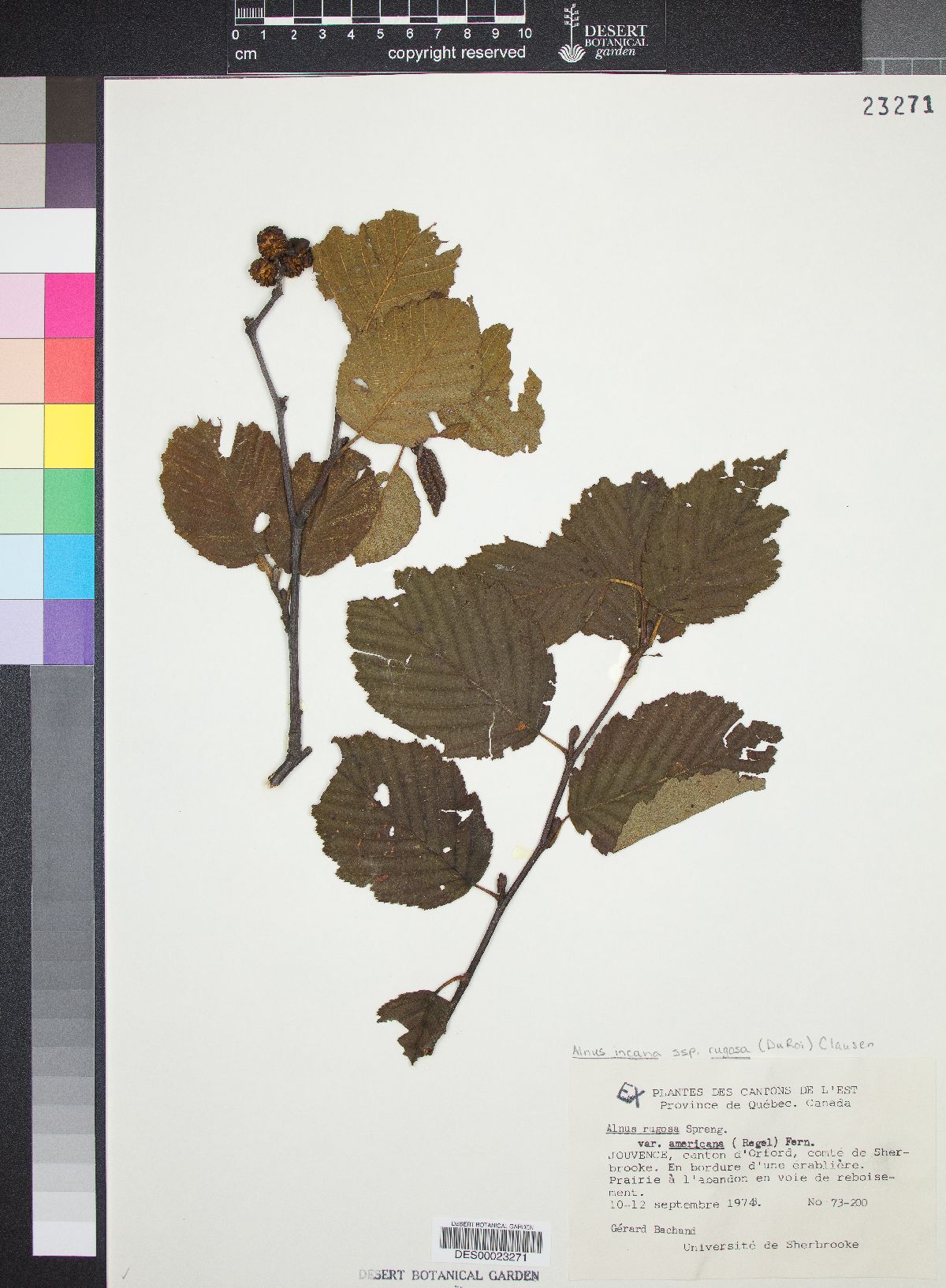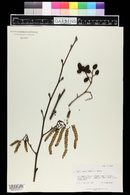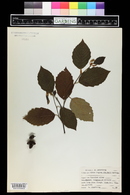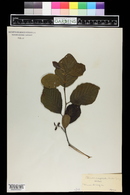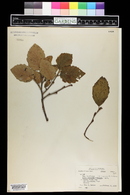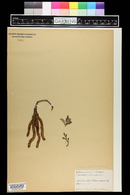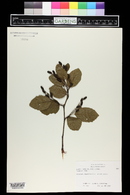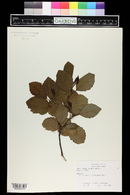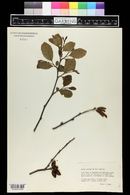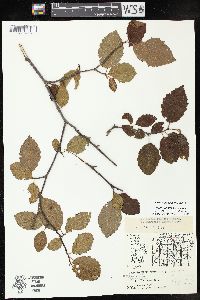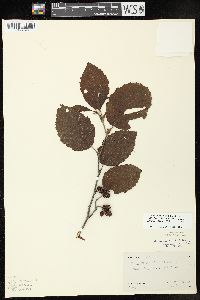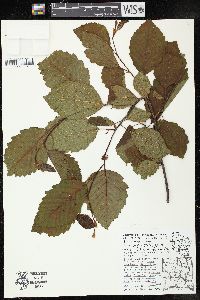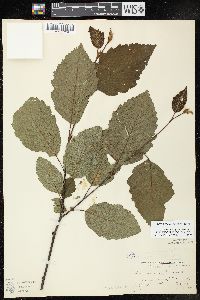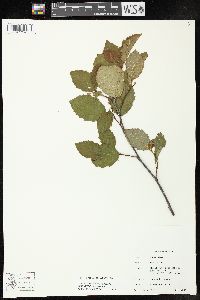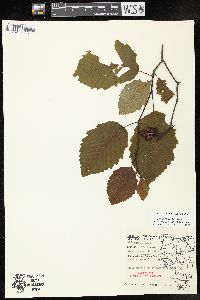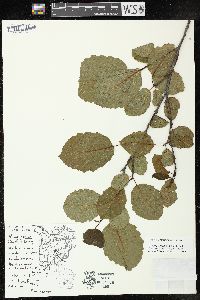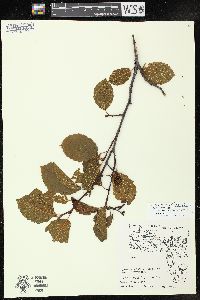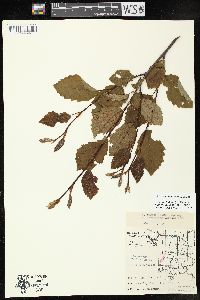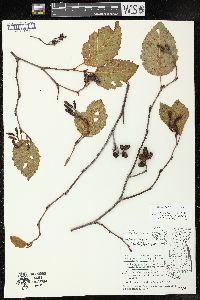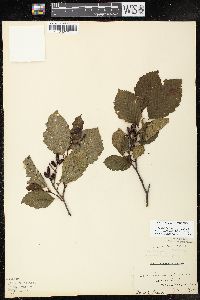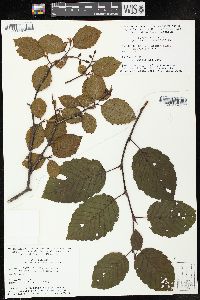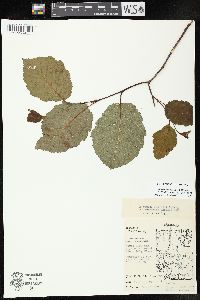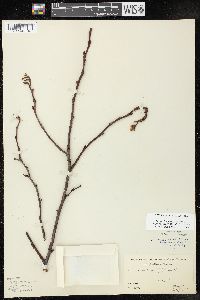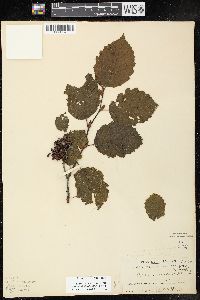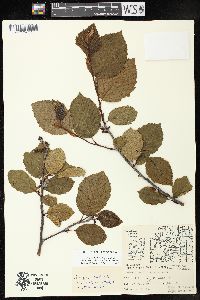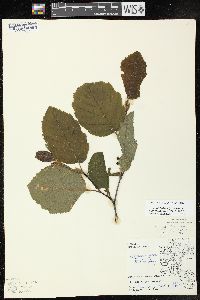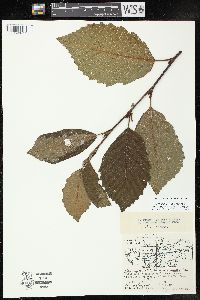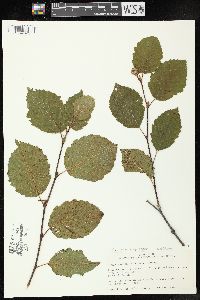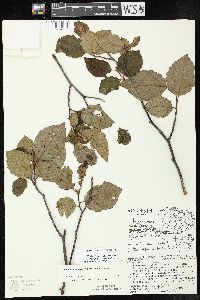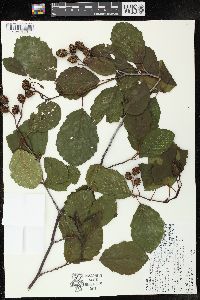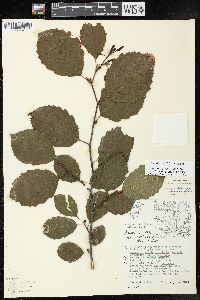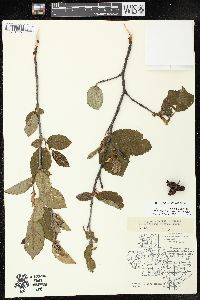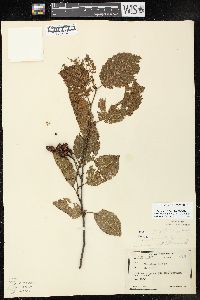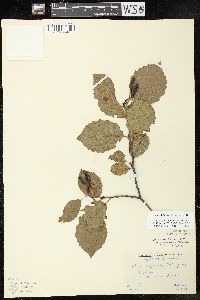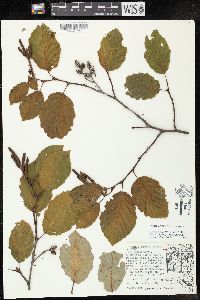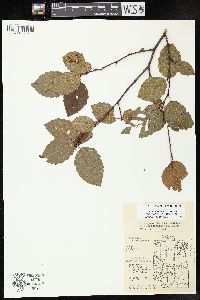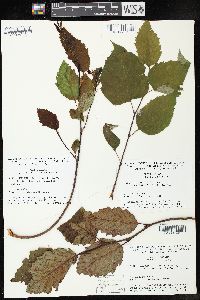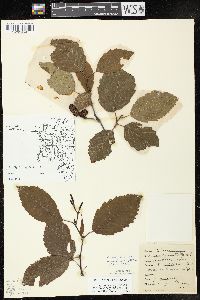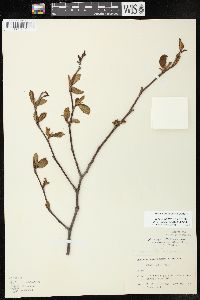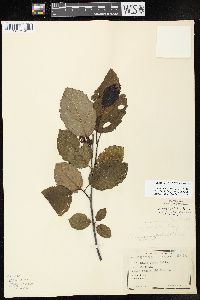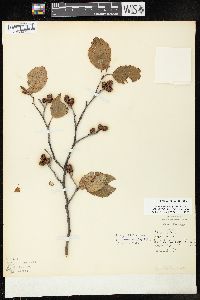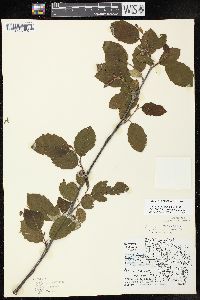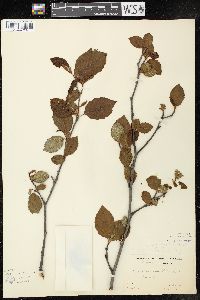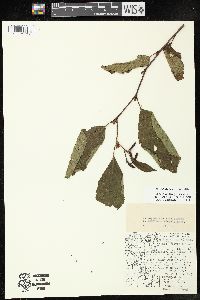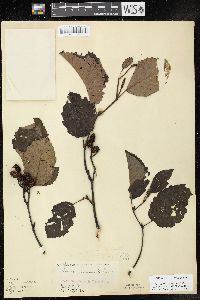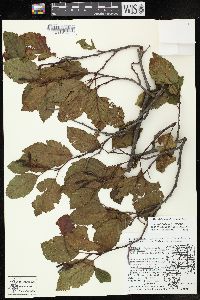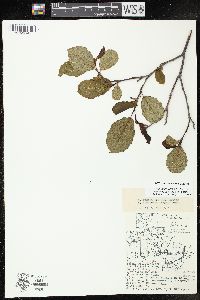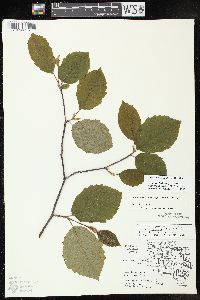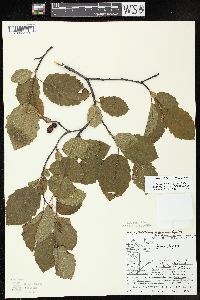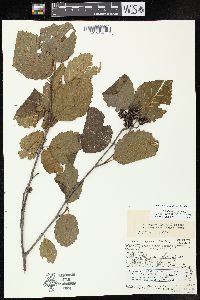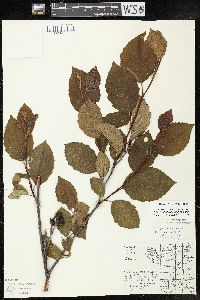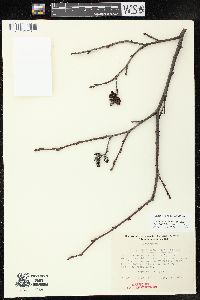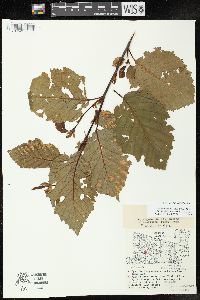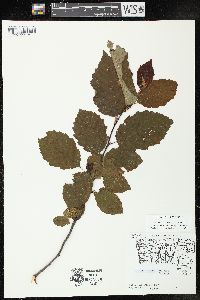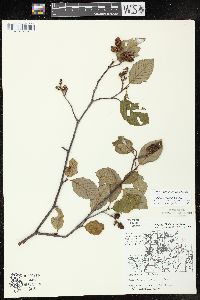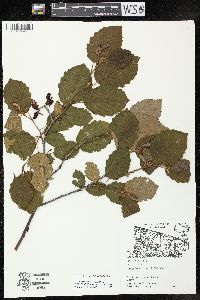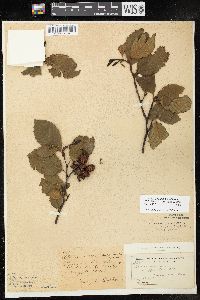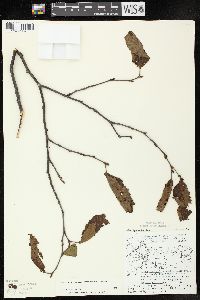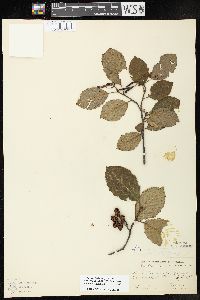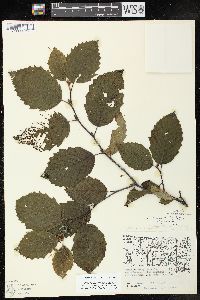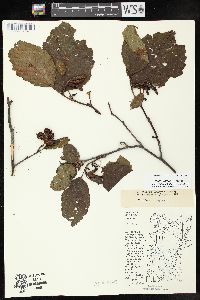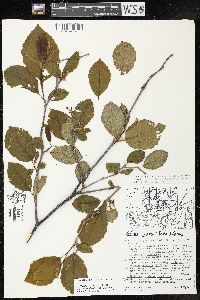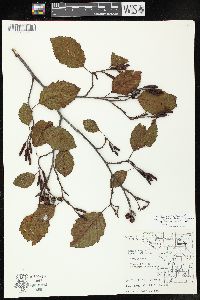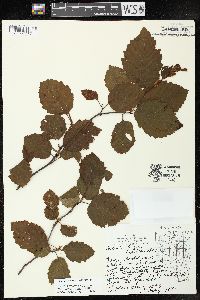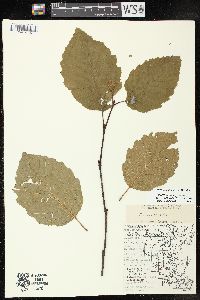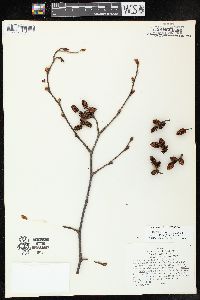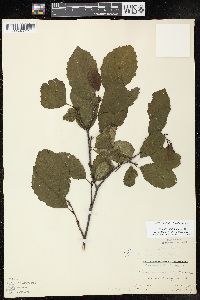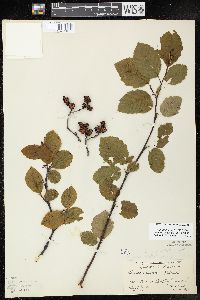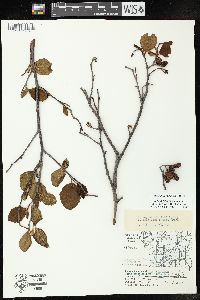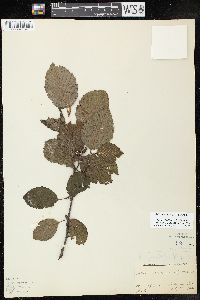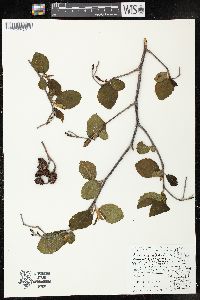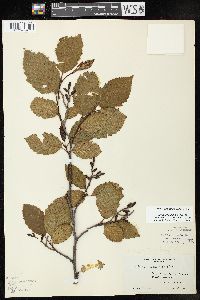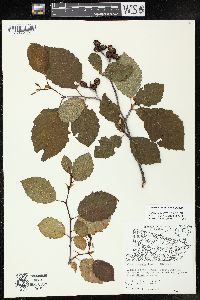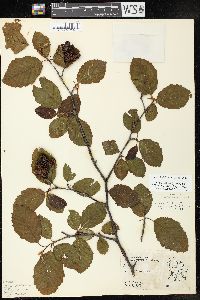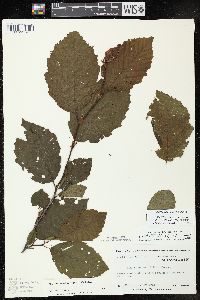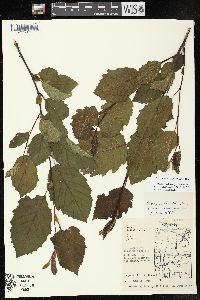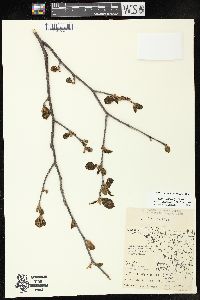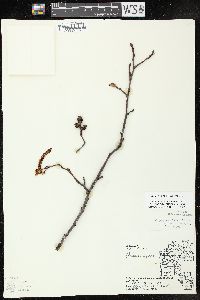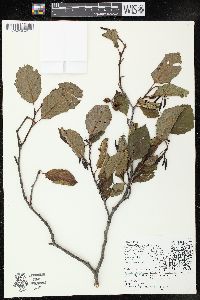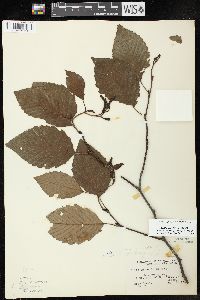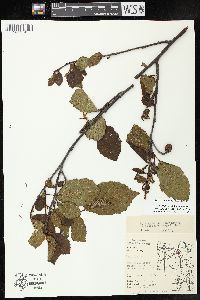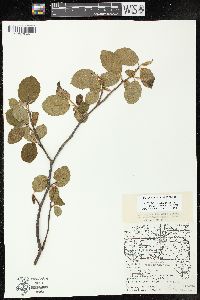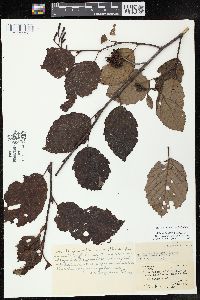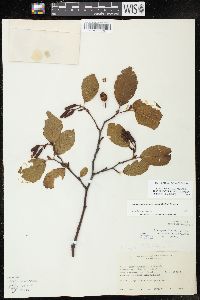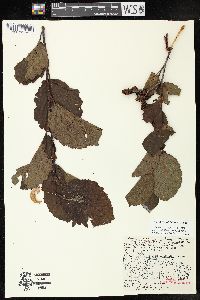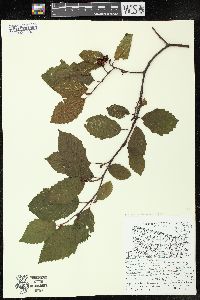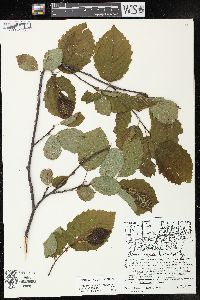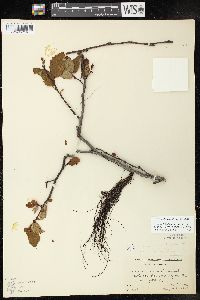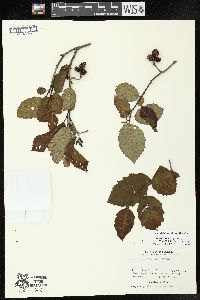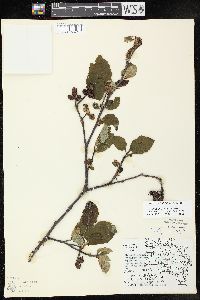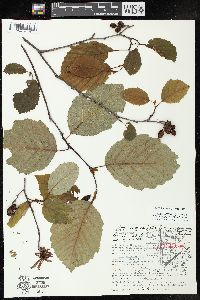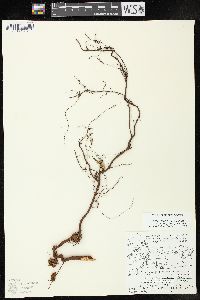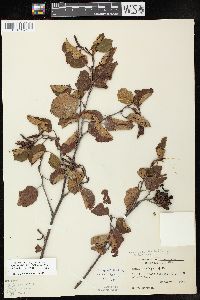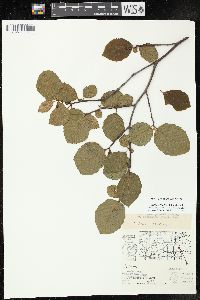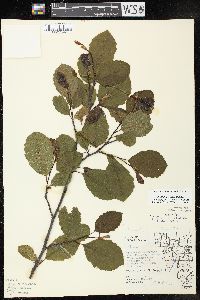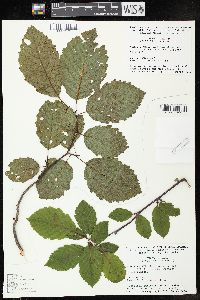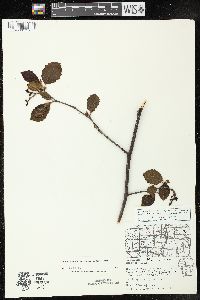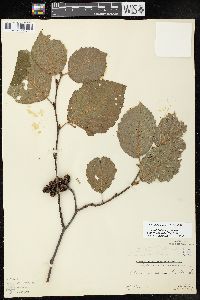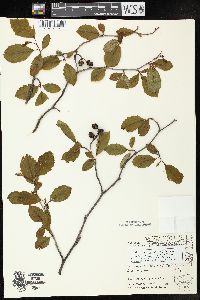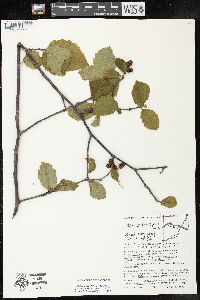Alnus incana subsp. rugosa
|
|
|
|
Family: Betulaceae
Speckled Alder, more...swamp alder, tag alder
[Alnus americana (Regel) Czerepan., moreAlnus incana f. tomophylla Fernald, Alnus rugosa f. emersoniana Fernald, Alnus rugosa f. hypomalaca Fernald, Alnus rugosa f. tomophylla (Fernald) Fernald, Betula rugosa (Du Roi) Ehrh.] |
Shrubs , open, spreading, to 9 m. Bark dark grayish to reddish brown, smooth; lenticels whitish, prominent, horizontal. Winter buds parallel to twig, ellipsoid, 3--7 mm, apex acute or obtuse; stalks 2--4 mm. Leaf blade ovate to elliptic, 4--11 × 3--8 cm, firm, base cuneate to narrowly rounded, margins usually coarsely doubly serrate, toothed to base, apex acute or short-acuminate to slightly obtuse; surfaces abaxially often glaucous, glabrous to sparsely pubescent, often more densely so on veins, slightly to not noticeably resin-coated. Inflorescences: staminate catkins in 1 or more clusters of 2--4, 2--7 cm; pistillate catkins in 1 or more clusters of 2--6. Infructescences ovoid, 1--1.7 × 0.8--1.2 cm; peduncles 1--5 mm. 2 n = 28. Flowering early spring. Stream banks, lake shores, bogs, swamps, margins of wet fields, swales, and roadsides, often forming dense thickets; 0--800 m; St. Pierre and Miquelon; Man., N.B., Nfld., N.S., Ont., P.E.I., Que., Sask.; Conn., Ill., Ind., Iowa, Maine, Md., Mass., Mich., Minn., N.H., N.J., N.Y., N.Dak., Ohio, Pa., R.I., Vt., Va., W.Va., Wis. Alnus incana subsp. rugosa is an important shoreline and meadow colonizer in boreal and north temperate areas of the Canadian Shield, and a weedy successional species in damp areas along roadsides throughout its range. It overlaps in range and intergrades with A . incana subsp. tenuifolia to the west (in Saskatchewan and Manitoba) and with A . serrulata to the south. It is only slightly differentiated from the more treelike European A . incana subsp. incana .
Shrub to small tree 2 - 9 m tall, trunk 5 - 12 cm in diameter Leaves: alternate, stalked, dull green above, pale or covered with grayish or white hairs beneath, 4 - 11 cm long, 3 - 8 cm wide, oval to inversely egg-shaped with a pointed tip and a rounded to wedge-shaped base, sharply and irregularly toothed, sometimes with hairs along veins. Flowers: either male or female, found on the same tree (monoecious), borne in catkins. Male catkins are in hanging clusters of two to four, brown, and 2 - 7 cm long. Female catkins at right angles to male catkins, 1.5 - 3 cm long, in clusters of two to six. Fruit: winged (samara), borne in a persistent, woody, brown, oval, cone-like cluster of scales (catkin) 1 - 1.7 cm long. Samaras are flattened with narrow wings. Bark: reddish brown, thin, rough, covered with white to light orange corky horizontal lines (lenticels) to 7 mm long. Twigs: reddish brown, smooth. The center of a cut stem (pith) is triangular. Buds: stalked, reddish brown, 3 - 7 mm long, elliptical, with two to three blunt scales that do not overlap (valvate). Terminal bud absent. Leaf scars: semicircular, somewhat raised. Form: wide-spreading, with crooked stems and an open crown. Trunks are often curved at the base because of a phototropic response that makes the plant lean toward the light, and from the pressure of snow which pushes branches toward the ground. Similar species: Alnus glutinosa is always a tree and has leaves with rounded to indented tips. Both Aalnus incana ssp. rugosa and Alnus serrulata may be trees or shrubs and have leaves with pointed tips. The leaves of A. serrulata are usually inversely egg-shaped, have finely toothed margins, and are green beneath. Flowering: early March to late April Habitat and ecology: This species is very common along the Paw Paw River in Berrien County. It often grows in moist thickets, such as those found in the Porter County dune area. It can invade temporary herbaceous communities and block the sun from other species by forming thickets from root collar sprouts. Occurence in the Chicago region: native Etymology: Alnus is the Latin name for an alder. Incana means "with grayish to white hairs," referring to the undersides of the leaves. Rugosa means wrinkled. The common name speckled alder comes from the specks of lenticels on the bark. Author: The Morton Arboretum From Flora of Indiana (1940) by Charles C. Deam Frequent in low ground about sloughs in the dunes near Lake Michigan and rare to very rare elsewhere in low woods or in low ground along streams. All of my specimens have the leaves more or less glaucous beneath and more or less pubescent, at least on the principal veins. Indiana Coefficient of Conservatism: C = 9 Wetland Indicator Status: FACW |

